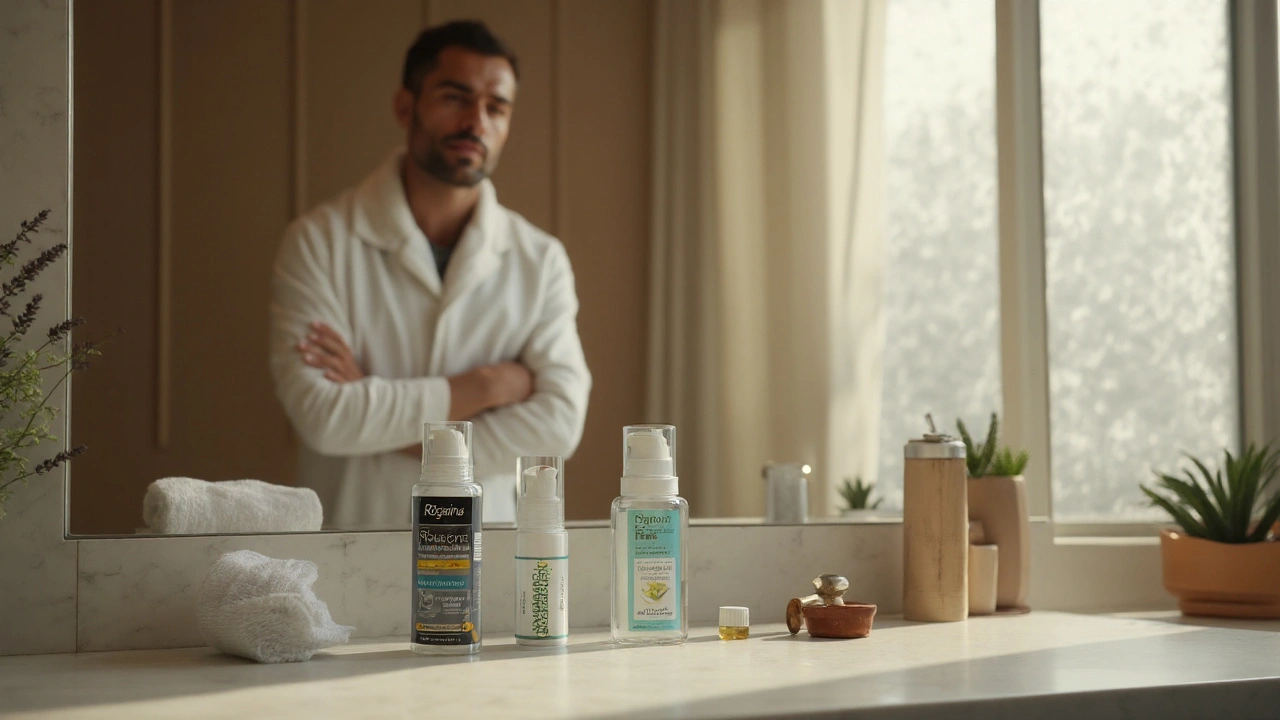

When looking at hair regrowth comparison, the process of evaluating different methods to restore lost scalp hair. Also known as hair loss treatment analysis, it helps you decide which option fits your budget and goals.
Two of the most talked‑about products are Minoxidil, a topical vasodilator approved for androgenetic alopecia and Finasteride, an oral 5‑alpha‑reductase inhibitor that reduces DHT levels. Minoxidil works by widening blood vessels in the scalp, while Finasteride blocks a hormone that shrinks hair follicles. Knowing the differences lets you match a treatment to your hair type, tolerance for side effects, and how quickly you want to see results.
Our hair regrowth comparison focuses on three practical angles: effectiveness, cost, and safety. Effectiveness is measured by how many users see thickening after three months and whether the gains stick after stopping the product. Cost includes the price of a month’s supply or a single procedure, plus any follow‑up visits. Safety covers common side effects like scalp irritation for Minoxidil or sexual dysfunction for Finasteride, and how often you need medical monitoring.
Beyond drugs, surgical options matter. Hair Transplant, a permanent procedure that moves follicles from a dense area to a balding zone offers the most lasting fix but comes with higher upfront costs and recovery time. PRP Therapy, platelet‑rich plasma injections that aim to stimulate natural follicle growth sits between drugs and surgery—cheaper than a full transplant but usually requiring several sessions. Understanding where each fits on the effectiveness‑cost‑safety triangle makes the overall comparison clearer.
Another popular entry is low‑level laser therapy (LLLT). It uses red light devices at home or in clinics to boost cellular activity in the scalp. While the science is still emerging, many users report modest thickness gains without medication side effects. LLLT’s low ongoing cost and ease of use make it a good add‑on, especially for people already on Minoxidil or Finasteride.
When you stack these options, you get a matrix of choices. For example, a young adult with mild thinning might start with Minoxidil, add Finasteride if progress stalls, and consider LLLT for extra boost. Someone with advanced balding might skip the pills, go straight to a hair transplant, and use PRP afterward to improve graft survival. The comparison isn’t a one‑size‑fits‑all checklist; it’s a set of variables you can mix and match based on personal goals.
Insurance coverage is another hidden factor. Most insurers won’t pay for Minoxidil or Finasteride, but they might cover part of a hair transplant if it’s deemed medically necessary. PRP and laser devices are typically out‑of‑pocket expenses. Knowing what your health plan will (or won’t) cover can swing the cost decision dramatically.
Side‑effect management also influences the final pick. Scalp itching from Minoxidil usually fades with proper moisturizers, while Finasteride’s sexual side effects can be mitigated by lower doses or alternate‑day dosing. Surgical risks—like infection or scarring—are low with modern techniques but still exist, so a reputable clinic matters. PRP injections may cause temporary soreness, but most patients tolerate them well.
Putting all this together, the hair regrowth comparison you’re reading now serves as a roadmap. Below you’ll find detailed write‑ups on each treatment, cost breakdowns, user experiences, and tips for talking to your doctor. Use the guide to narrow down the options that align with your budget, tolerance, and timeline, then move forward with confidence.

Compare Rogaine 2% minoxidil with finasteride, 5% minoxidil, laser therapy and natural options. Learn efficacy, side effects, costs and how to choose the right hair loss solution.